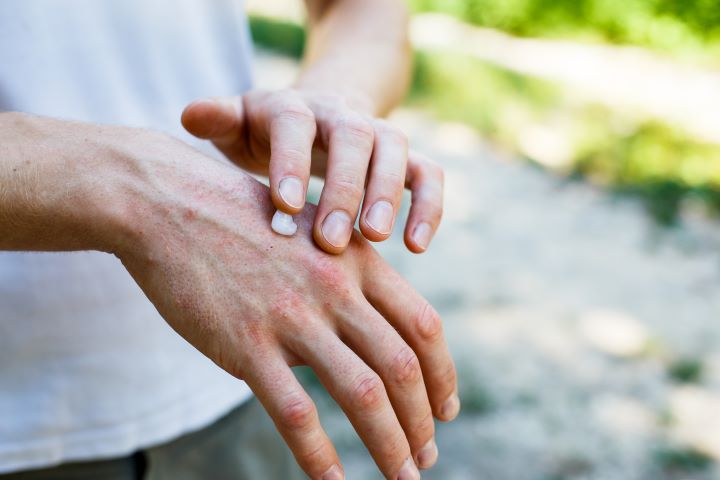Understanding Atopic Dermatitis: Symptoms, Treatments, and Care Approaches
Atopic dermatitis, commonly known as eczema, is a chronic inflammatory skin condition that affects millions of people worldwide. Characterized by red, itchy, and inflamed skin, this condition can significantly impact quality of life for those who suffer from it. While atopic dermatitis typically begins in childhood, it can persist into adulthood or develop later in life. Understanding the nature of this condition, its symptoms, and various treatment approaches is essential for effectively managing it and minimizing its impact on daily activities.

Insights Into Managing Atopic Dermatitis Effectively and Safely
Effective management of atopic dermatitis requires a comprehensive approach that addresses both symptoms and underlying causes. The condition is characterized by periodic flare-ups followed by periods of remission, making consistent management crucial. Research indicates that atopic dermatitis results from a combination of genetic predisposition and environmental triggers that compromise the skin barrier function and trigger immune system responses.
A fundamental aspect of managing atopic dermatitis safely involves identifying and avoiding personal triggers. Common triggers include certain fabrics (particularly wool and synthetic materials), harsh soaps and detergents, specific foods, stress, sweat, and extreme temperatures. Keeping a symptom diary can help identify patterns between exposures and flare-ups. Additionally, maintaining proper skin hydration through regular moisturizing—ideally within three minutes after bathing—helps restore the skin barrier and prevent water loss.
An Overview of Atopic Dermatitis Symptoms and Care Strategies
The symptoms of atopic dermatitis can vary widely in severity and presentation. The hallmark symptom is intense itching (pruritus), which often precedes visible rash development. Other common symptoms include dry, scaly skin; redness or inflammation; small, raised bumps that may leak fluid when scratched; thickened, cracked, or raw skin; and areas of temporary skin discoloration after healing.
In infants, atopic dermatitis typically appears on the face, scalp, and extremities. Children and adults more commonly experience symptoms in body fold areas like the inner elbows, behind the knees, on the neck, and around the eyes and ears. The chronic nature of the condition often leads to a cycle of itching and scratching that worsens inflammation and damages the skin barrier further.
Care strategies focus on maintaining skin health through a consistent skincare routine. This includes using mild, fragrance-free cleansers; taking short, lukewarm showers or baths; applying moisturizers immediately after bathing; and using gentle patting motions rather than rubbing when drying the skin. Wearing loose-fitting, breathable cotton clothing can also help reduce irritation and allow the skin to breathe.
What to Know About Approaches to Atopic Dermatitis Management
Management approaches for atopic dermatitis typically follow a stepped care model, beginning with basic skincare and environmental modifications before progressing to medical interventions as needed. Topical treatments represent the first line of medical therapy, with corticosteroids being the most commonly prescribed option for reducing inflammation and itching. These range from mild (hydrocortisone) to high-potency formulations and should be used according to medical guidance to minimize potential side effects like skin thinning.
Non-steroidal topical medications offer alternatives for long-term management. Topical calcineurin inhibitors (TCIs) like tacrolimus and pimecrolimus work by suppressing immune system activity in the skin without the side effects of steroids. Another option, crisaborole, blocks inflammatory enzymes in the skin. For moderate to severe cases not responding to topical treatments, systemic options may be considered, including oral corticosteroids, immunosuppressants, or newer biologic medications that target specific components of the immune system involved in inflammation.
Phototherapy, which involves exposing the skin to controlled amounts of UVB light, represents another treatment approach for widespread atopic dermatitis. This therapy helps reduce inflammation and can be particularly useful for patients who haven’t responded adequately to topical treatments. However, it requires regular clinical visits and carries some risks, including potential skin aging and increased skin cancer risk with long-term use.
Lifestyle Modifications and Complementary Approaches
Beyond medical treatments, various lifestyle modifications and complementary approaches can help manage atopic dermatitis. Stress management techniques such as meditation, deep breathing exercises, and yoga may reduce flare-ups triggered by stress. Maintaining optimal environmental conditions—keeping indoor humidity between 45-55%, using air purifiers to reduce allergens, and maintaining moderate temperatures—can minimize symptom triggers.
Dietary considerations may also play a role for some individuals. While the relationship between diet and atopic dermatitis remains complex, some patients report improvement after identifying and eliminating specific food triggers. Common culprits include dairy, eggs, nuts, soy, gluten, and certain fruits. Working with healthcare providers to conduct proper elimination diets can help determine if specific foods contribute to symptoms without risking nutritional deficiencies.
Emerging evidence suggests that addressing the skin microbiome—the collection of microorganisms living on the skin—may benefit some patients. Specialized moisturizers containing prebiotics or probiotics aim to restore healthy bacterial balance on the skin. While research in this area continues to evolve, early studies show promise for certain formulations in improving skin barrier function and reducing inflammation.
Long-term Management and Emotional Impact
Living with atopic dermatitis extends beyond physical symptoms to significant emotional and psychological dimensions. The visible nature of the condition, along with discomfort and sleep disturbance from itching, can lead to anxiety, depression, and social isolation. Children with atopic dermatitis may face particular challenges, including bullying and disrupted school participation.
Support groups, both online and in-person, provide valuable emotional support and practical advice from others experiencing similar challenges. Mental health professionals specializing in chronic health conditions can offer strategies for coping with the psychological impact. For parents of affected children, education about the condition helps promote understanding and appropriate management at school and in other settings.
Long-term management focuses on prevention as much as treatment. Developing a personalized action plan with healthcare providers—outlining daily maintenance, strategies for handling early signs of flares, and when to seek medical attention—empowers patients to take control of their condition. Regular follow-up appointments allow for treatment adjustments as needed and monitoring for potential complications or associated conditions like asthma or allergic rhinitis.
This article is for informational purposes only and should not be considered medical advice. Please consult a qualified healthcare professional for personalized guidance and treatment.




